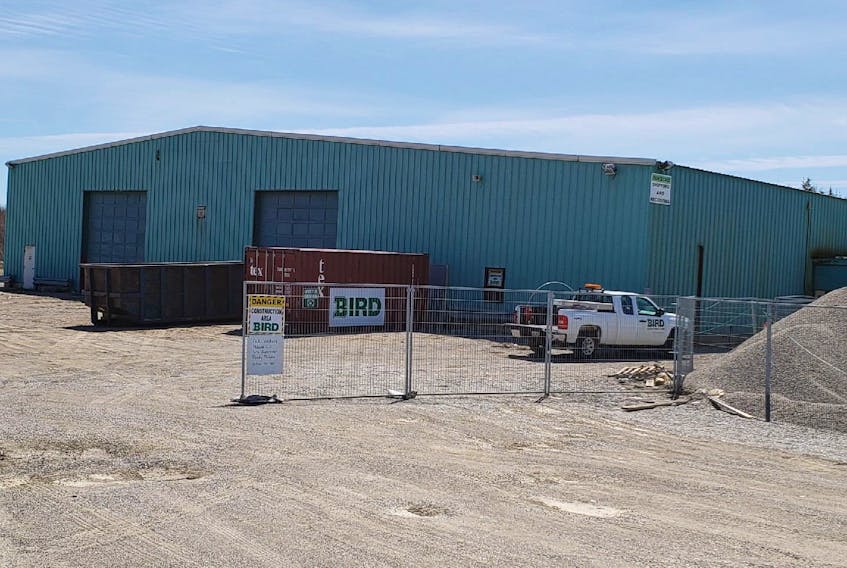Of the 104 existing Access to Cannabis for Medical Purposes Regulations (ACMPR) licences in Canada, over 75 per cent are in either Ontario or British Columbia.
This means more than 50 per cent of Canadians don’t have access to locally produced cannabis products. With recreational cannabis legalization looming later this year, that could be viewed as a problem.
But for Biome Grow, an arm of Toronto-based Jacob Capital Management, it represents an opportunity in Atlantic Canada.
“We realized pretty early on … that being local will afford you certain privileges which supplying product out of Ontario will not,” says Khurram Malik, a Jacob Capital partner and its head of research. “What we like to do is build local ecosystems in the provinces we are in.
“The other really good thing about Atlantic Canada, and particularly Newfoundland, is that if you build supply local, locals will prefer your product over something that’s not from here.”
The company started its eastward migration in May of last year with the acquisition of Highland Grow Inc. in Antigonish, N.S., stepping in to help bolster the company’s late-stage ACMPR licence application by infusing it with the capital from investors — many of them local — and used it to clear up any existing liens and help build the facility. Health Canada approved the licence not long after and the company has since started harvesting.
Biome has also stepped in on a late-stage applications in Prince Edward Island and another previously approved ACMPR facility in Ontario, and in April of this year acquired 100 per cent ownership of Barachois Brook-based Back Home Medical Cannabis Corp., which was incorporated by St. George’s entrepreneur Dave Callahan in 2017.
“I was literally to the point where I had moneyed out and the process was so long (that) my ability as an average Joe Blow citizen to put something on paper for this is no good. I don’t have the right number of letters behind my name,” recounts Callahan, now president of the Biome subsidiary.
“I had to seek the ability to bring this above and beyond some small little operation to what I would see as something that really benefitted my area.”
The original plan called for a new 150,000-square-foot building on Callahan’s 150 acres of land, but after speaking with government and Health Canada officials, it was suggested that the licence application may move along quicker if the group could get something off the ground this year.
The decision was then made to retrofit an existing 18,000-square-foot structure on the site that was previously used in the fabrication of some Muskrat Falls infrastructure pieces.
“We’re going to be building the larger facility simultaneously with the retrofit of the existing building so we can give Newfoundlanders something to buy locally sooner rather than later, because otherwise it would be the middle of next year before we’d be done with the big building,” says Malik.
Once complete by late 2019, the new facility will measure 168,000 square feet, the largest in Biome’s fleet and eclipsing Canopy Growth’s St. John’s growing facility by nearly 20,000 square feet.
Setting Biome’s Back Home apart from its LP brethren of similar scale is that many aspects of the growing operation will be automated in a manner similar to other aspects of the agriculture industry.
“The more you can engineer the human being out of the equation, the better chance you have of having a consistent product as you scale up,” Malik says.
Callahan likens it to cooking.
“It’s easier to cook for five or six people, but when you try to cook for 200 people all of a sudden it doesn’t have the same flavour, it doesn’t have the same quality.”
All that said, at peak production the facility will employ up to 100 individuals — not including those during construction — which is music to Callahan’s ears.
“I’m going to do well no matter what, but I won’t feel like it’s ever been a success unless I bring this employment and these benefits to my area,” he says, noting that he’s been inundated with phone calls about employment since the construction company’s sign went up at the edge of the property.
“We need this so much.”
While the initial retrofitting will source its power from the provincial grid, once construction is complete the grid will be a backup to renewable energy platforms and generators.
“The only issue I have with Newfoundland compared to the other Atlantic provinces is your power is very expensive and it’s getting more expensive,” says Malik, suggesting a facility of that size will require four to six megawatts annually. “We are trying to build the lowest operating cost footprints that we can possibly build in Canada and hopefully one of the lowest cost in the industry. To do that you’ve got to figure a low-cost power source because that’s your biggest operating cost.”
Malik ballparks the total cost of construction in between $40 million and $50 million.
Seeks supplier deal
The provincial government currently has only one contract signed for the production and supply of cannabis products once it becomes legal — the deal inked with Canopy Growth — but it has made clear there’s still space in the sector.
Khurram Malik and Dave Callahan aren’t at liberty to divulge details of their negotiations with the province or the Newfoundland and Labrador Liquor Corp. to become a supplier, but both suggest Biome and Back Home are “being treated fairly.”
So does that mean they’ll receive the same incentives — multiple retail licences and a potential $40-million tax break down the road through a percentage of all cannabis sales — as Canopy did?
“We would like some of that, but we’d like something slightly different,” Malik says. “The overall package may be worth the same amount to us, but the ingredients in that package may be a little different.”
The sides are also engaged in a discussion about potential retail licences, something that’s particularly attractive given that third parties and not just government entities will be able to enter the sector.
“There’s limited marketing we can do because it’s a controlled substance and the closer you can touch the end consumer the better,” Malik says. “It gives you quite a bit more visibility in what you can do. It’s also one of the reasons we’re building bigger here, because you have retail locations. Otherwise it may have been a little bit smaller.”
Twitter: kennoliver79









